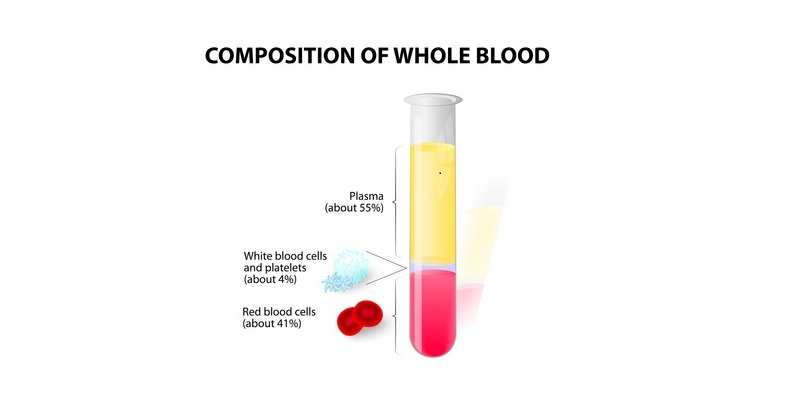Indice
- 1. Pathogenesis
- 2. Clinical manifestations
- 3. Clinical and laboratory diagnosis
- 4. Laboratory diagnosis
- 5. Treatment and prognosis
Heparin induced thrombocytopenia (HIT)
Malattie Delle Piastrine

Heparin induced thrombocytopenia (HIT) is a life threatening, immune mediated complication of treatment with unfractioned heparin (UHF) or low molecular weight heparin (LMWH). It occurs in up to 5% of patients exposed to heparin. HIT is a prothrombotic disorder caused by IgG autoantibodies that bind to conformational epitopes on PF4 when it is complexed with heparin. These antibodies cause thrombocytopenia and thrombosis by peripheral platelet consumption and platelet activation, respectively. (1) (www.uptodate.com 2014) The risk of this complication is increased when it is used UFH more than LMWH, is increased in patients of female sex, in older patients, in surgical patients, particularly in orthopedic surgical patients who have a higher risk than medical patients, possibly because of the release of cytokines during tissue injury. However the fact that anti-PF4-heparin antibodies can develop in healthy persons after exposure to heparin, suggests that some people may be predisposed to antibody formation, which is necessary but not sufficient to cause the clinical syndrome. (2) (Journal of Thrombosis and Haemostasis 2012 vol. 10 pp. 1446-1449) The risk of heparin induced thrombocytopenia is also related to the duration of heparin exposure and to the characteristics of the heparin molecule. When UFH is administered to patients after surgery, the risk to develop HIT is from 1% to 5% and when LMWH is administered, the risk is from 0.1% to 1.0%. Thrombocytopenia usually occurs 5 to 10 days after the initiation of heparin treatment, except for rapid onset heparin induced thrombocytopenia, which is characterized by an abrupt decrease in the platelet count within hours after the exposure to heparin in patients who were already exposed to heparin and also have anti-PF4-heparin antibodies,and except for delayed onset HIT, which is characterized by thrombocytopenia and thrombosis occurring several weeks after heparin exposure. (3) (New England Journal of Medicine 2013 vol. 368 pp. 737-744)
The most common clinical manifestation is thrombocytopenia that can occur in up to 90% of cases. Thrombosis can occur in up to 50% simultaneously with the decrease in the platelet count or can follow within days. The thromboembolic manifestations in ΗΙΤ include more frequently deep vein thrombosis,pulmonary embolism,and less frequently myocardial infarction, stroke, and peripheral arterial thrombosis that can lead to skin necrosis, limb gangrene, and organ infarction.Less common manifestations include acute systemic reactions and necrotizing lesions at the heparin injection sites. The ratio of venous thrombotic events compared to arterial events is 4:1. (3) (New England Journal of Medicine 2013 vol. 368 pp. 737-744) Actually,the mortality with an appropriate diagnosis and treatment is below 2%
To diagnose HIT, we must evaluate clinical manifestations and laboratory data but, because definitive laboratory data as immunoassay and/or functional assay for HIT antibodies may not be available for several days, we must rely our diagnosis on clinical findings and immediately laboratory data. The treatment consists in immediate discontinuation of heparin and an immediate anticoagulation with a non heparin anticoagulant as argatroban, danaparoid, bivaluridin or fondaparinux unless there is a strong contraindication as bleeding or a high bleeding risk. The anticoagulant treatment is necessary because patients with HIT have a risk of thrombosis during the period when the autoantibodies continue to activate platelets and also for the condition for which heparin was administered initially.
For patients with normal renal and hepatic function, any of the alternative anticoagulants can be used.
For patients with renal insufficiency it is suggested to use argatroban at therapeutic doses because argatroban is metabolized in the liver.
For patients with hepatic impairment it is suggested to use fondaparinux at therapeutic doses.
For patients with renal and hepatic impairment it is suggested to use argatroban or bivaluridin at reduced doses. (4) (www.uptodate.com 2014) Just recently in March 2015, an interesting paper about HIT pathogenesis was published.
In this paper is described the critical role of CD4 T cells in PF4/heparin antibody production in mice (5) (Blood 2015 vol. 125 (11) pp. 1826-1829) For details, see section on "Pathogenesis".
References :
1 ) Coutre Steven, Leung Lawrence L.K., Tirnauer Jennifer S. : Clinical presentation and diagnosis of heparin-induced thrombocytopenia. www.uptodate.com 2014
2 ) Kelton J.G., Warkentin T.E., Moore J.C. et al. : A prospective study measuring the development of antibodies against platelet factor 4-heparin in healthy males after exposure to heparins. Journal of Thrombosis and Haemostasis 2012; 10 : 1446-1449
3 ) Kelton John G., Arnold Donald M., Bates Shannon M. : Nonheparin anticoagulants for heparin-induced thrombocytopenia. New England Journal of Medicine 2013; 368 : 737-744
4 ) Coutre Steven, Leung Lawrence L.K., Tirnauer Jennifer S. : Management of heparin-induced thrombocytopenia. www.uptodate.com 2014
5 ) Zheng Yongwei, Yu Mei, Padmanabhan Anand et al. : Critical role of CD4 T cells in PF4/heparin antibody production in mice. Blood 2015; 125 (11) : 1826-1829